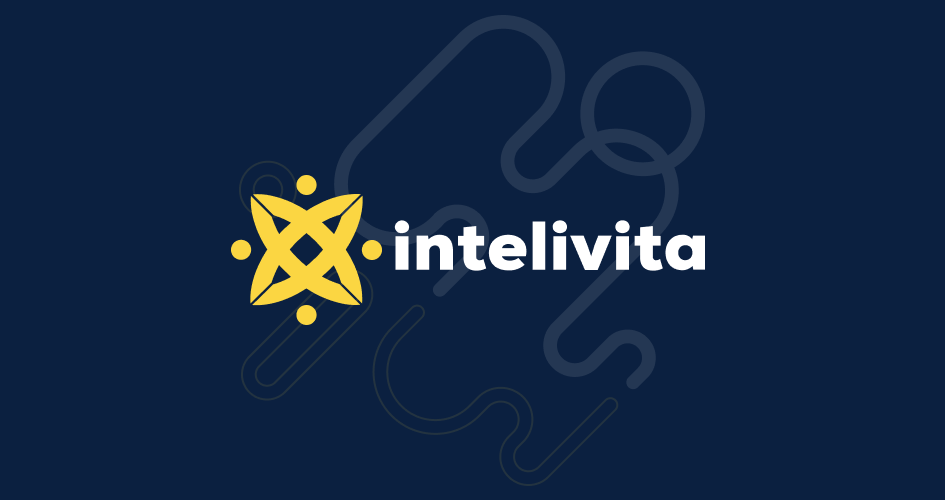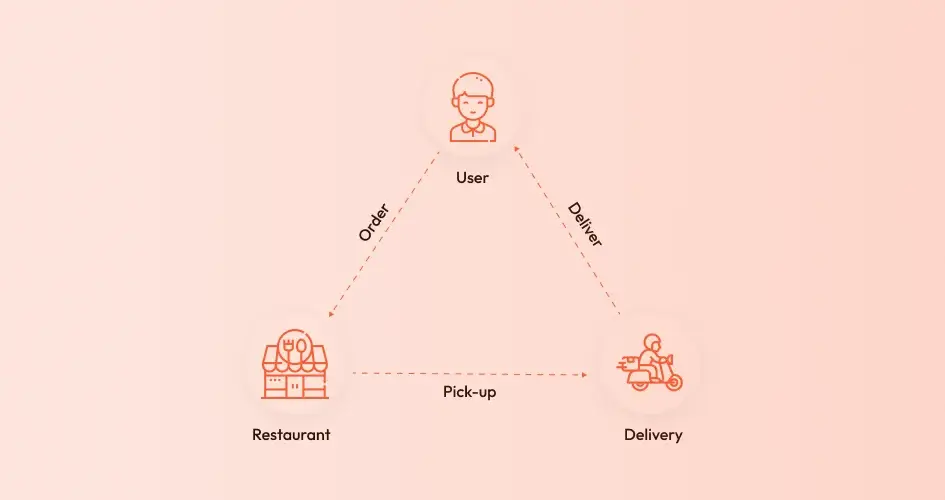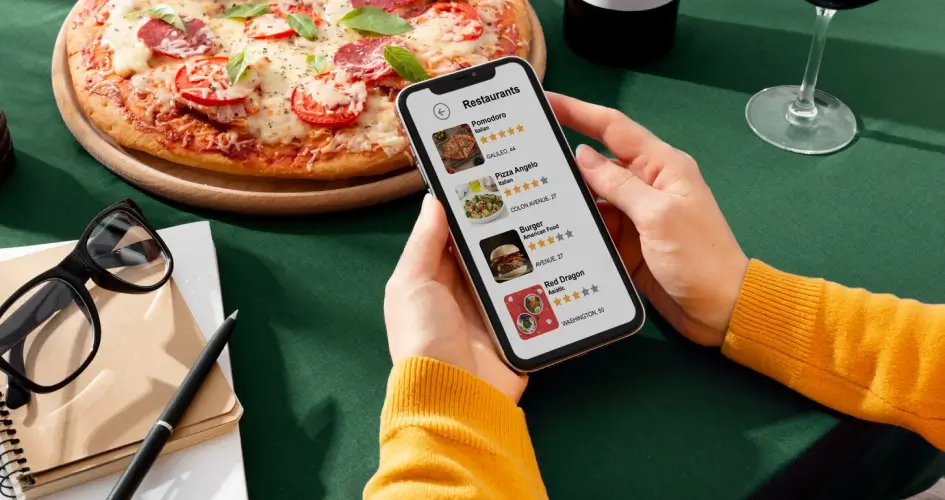Breaking into the online food delivery industry can be hard, especially with major food delivery companies like Uber Eats and Door Dash dominating the competitive market.
But, hard doesn’t equal impossible.
With the right food delivery app development company and strategies, building a revenue-generating food app is highly doable.
Before you begin, however, learn the common challenges of developing food delivery apps and how to overcome them in this article.
Addressing these food app problems, you can deliver the best experience for customer satisfaction.
Once your delivery app is up and running, we will also discuss some of the challenges faced by food delivery business owners.
Food App Development Challenges
From food delivery startups to restaurants looking to go online, having a mobile application can make all the difference.
With it, these businesses can receive orders, track purchase history, and ensure a timely delivery, all within a single place.
That said, creating a strong food delivery system is an-going process that doesn’t happen overnight.
Before committing your mind and budget to it, learn five common food delivery app challenges and how to solve them.
1. Ensuring a Seamless UX Design
Ask any seasoned developer, and they’ll agree that a visually appealing yet intuitive UX design is fundamental in building a successful food delivery app.
The main role of UX/UI design in delivery app development is to create a seamless navigation flow, making it easy for users to find what they’re looking for.
Unfortunately, designing a flawless user experience for your food delivery business is easier said than done.
Here are some common hurdles to expect:
- Catering to multiple devices – Customers access food delivery apps from various devices. Designing an interface that looks good and performs consistently well across different screen sizes can be difficult.
- Prioritizing the right features – Integrating every feature you can think of is fine, but make sure to do that without cluttering the interface. Deciding what to prioritize and where to place these features requires careful consideration.
- Capturing the audience’s attention – Most, if not all, users have limited attention spans. So, the challenge here is to capture their interest quickly and guide them through the food ordering process.
- Simplifying the onboarding process – A complicated onboarding process can frustrate visitors, resulting in abandoned sign-ups. Striking a balance between gathering the necessary information and providing a swift experience is a constant challenge.
- Ensuring maximum accessibility – Users come in various shapes and sizes, and some may have disabilities. If you want your food delivery app to be accessible to them, be prepared to incorporate features like voice commands, larger font sizes, and high contrast options.
To design a stunning, easy-to-use interface that matches customer expectations, make sure to incorporate the following elements:
- Responsive design: Develop a responsive mobile app that works well across various devices and screen sizes. A consistent experience on both smartphones and tablets contributes to a positive user perception of your food delivery company.
- Streamlined onboarding: Minimize the steps required for users to sign up, add contact details, and start placing orders. Consider integrating social media logins for a quicker onboarding experience.
- Clear menu display: Present menu items, prices, and delivery details in a clear manner. Use high-quality visuals and easy-to-locate buttons to enhance the user experience.
- Efficient search functionality: Implement a search functionality and filters to help users quickly find their preferred restaurants and dishes. Must-have filter options include meal categories, prices, and dietary preferences.
- Seamless checkout process: Optimize the checkout process to be as simple as possible. Implement features like saved addresses, multiple payment options, and order tracking to enhance the overall user experience.
2. Selecting the Right Tech Stack
With so many frameworks and programming languages available, choosing the right technology stack for your food ordering platform can be complex.
To build a food delivery app that matches your vision, consider the following factors before deciding on a tech stack:
- Platform compatibility. Decide whether you want to develop a food delivery app for iOS, Android, or both. This is because each platform requires different expertise and tech stack.
- Scalability. Select technologies that can handle increased loads without compromising performance. Failing to address scalability issues might lead to app crashes or slow response times, which can negatively impact the user experience.
- Third-party integrations. Food delivery apps often rely on third-party services like payment processing, mapping, and restaurant management. Make sure your tech stack can connect with these services while maintaining data security.
- Maintenance and updates. As technology evolves, it’s important to keep your app up-to-date with the latest frameworks. This allows you to incorporate new features, fix bugs, and maintain a flawless performance.
- Cost considerations. Investing in a mobile app goes beyond the initial development costs, but also long-term maintenance expenses. Opt for technologies that align with your budget while ensuring scalability and efficiency.
If you have no prior experience in coding and design, consider hiring a trusted mobile app development agency like intelivita.
Tell us your ideal food delivery app, and our experts will make it happen – it’s that simple.
3. Implementing Personalization
In an industry as competitive as the food delivery service, delivering a personalized experience helps you win customer loyalty.
After all, customers love to change their profile picture, edit their username, and get food recommendations based on their purchase history.
That being said, this part of the development process involves a lot of factors to consider, such as:
- Personalization means collecting and analyzing user data, which can raise privacy concerns among users.
- Inaccurate data can lead to irrelevant recommendations, hindering user experience instead of improving it.
- Striking the right balance of recommendations – too many of them can overwhelm users.
- User preferences can change over time, making it challenging to keep personalization algorithms updated.
And so, it’s crucial to follow these tips when adding personalization to your food delivery platform:
- User-controlled preferences: Make it easy for users to control and customize their dietary restrictions, favorite cuisines, and preferred delivery times. With this approach, you can tailor the in-app experience to customer preferences.
- Continuous tracking: Implement machine learning algorithms that adapt to evolving user preferences. Use the insights to analyze consumer behavior and predict upcoming trends.
- User feedback: The best way to understand user needs is by listening to what they have to say. Enable users to provide constructive feedback on your personalized recommendations.
- The option to turn off personalization: Some users may prioritize privacy over personalization. Respect their choice by allowing them to deactivate the recommendation feature.
4. Ensuring Data Security and Privacy
To deliver personalized food delivery services, your mobile app relies heavily on customer data.
This may include their name, address, phone number, buying habits, and favorite meals.
For that reason, be extremely careful when it comes to protecting sensitive information and data privacy.
Hackers always find new ways to gain access into your food delivery app and leak customer data for their own gains.
Beyond negatively impacting user trust, data breach can also result in a lawsuit and monetary loss for your business.
To avoid this, perform the following security measures:
- Follow coding best practices – Operating systems like Android and iOS have their own set of rules for app development and deployment. Make sure to follow these requirements and conduct regular audits to find vulnerabilities in your coding.
- Enable two-factor authentication – To prevent brute-force attacks and unauthorized access, implement two-factor authentication to verify user identities.
- Implement data encryption – End-to-end encryption secures user data during transit and storage. Even if someone intercepts the data, it remains unreadable without the proper decryption keys.
- Conduct regular security audits – Identify vulnerabilities in the app’s codebase and infrastructure using both automated tools and manual inspections.
- Educate users on privacy settings – Clearly communicate how user data will be used, stored, and shared within the app. Give users full control over the shared information and allow them to adjust privacy settings easily.
5. Scaling for Peak Demand
Managing the app’s performance during peak hours or special events is crucial to prevent crashes and retain customers.
In this development phase, your food delivery app has probably hit the market.
So, the significant challenge lies in maintaining a smooth performance and loading speed.
Here are some ways to work around it:
- Switch to cloud-based infrastructure: Cloud hosting platforms usually offer auto-scaling features that adjust server capacity in response to traffic spikes. This ensures optimal performance without the need for manual intervention.
- Perform load balancing: This technique lets you distribute incoming traffic across multiple servers. As such, no single server will be overwhelmed with requests, preventing downtime and ensuring a smooth user experience during peak demand.
- Implement caching: Store frequently accessed data, such as restaurant menus and user profiles, on the cache. It eliminates repeated database access and reduces the load on backend servers.
- Use a content delivery network: A global CDN has data centers all around the world. So, you can simply choose a server location closest to your target audience for faster data retrieval and content delivery.
The Key Challenges of Running a Food Delivery Business
By now, you’ve probably built a food delivery app. But the journey doesn’t stop there – running and growing a food delivery business comes with its own set of challenges.
Worry not, this section will walk you through each potential bottleneck and the steps to overcome them.
1. Setting the Right Pricing Strategy
Many food delivery startups are still trapped in the old way of offering low prices and unfeasible discounts to attract new customers.
Don’t make the same mistake. After all, the point of starting a food delivery business is to make profits, not to impress people with the highest number of app users.
Instead, calculate your operational and food costs, and research the market prices. After that, set a competitive, yet profitable pricing strategy.
But, how can you beat your competitors that are more affordable?
The answer is simple – offer unique selling points that other food delivery platforms don’t.
For instance, you can create a “10-minute delivery” campaign and provide full refunds if the delivery drivers are late.
2. Maintaining Food Quality
Related to the previous point, maintaining the quality of your meals and beverages can give you that competitive edge.
However, it can be challenging for food delivery businesses that aren’t involved directly in the cooking process.
This is because they tend to deal with many restaurant partners, resulting in an unpredictable food quality.
If this sounds like your business, here are some tips you can try:
- Select the right restaurant partners: When weighing your options, research the track record, online ratings, and customer reviews of each restaurant or kitchen to gain insights about their performance.
- Hire quality control personnel: After selecting the partners, you can hire a QA team to conduct regular inspections and maintain the food quality.
- Use high-quality packaging products: Provide insulated food bags to your partnering restaurants. This method will keep the food fresh even after going through long delivery routes.
3. Managing Logistics
For food delivery app businesses, logistics management is a complex task.
It involves coordinating various elements to ensure timely food deliveries and higher customer satisfaction.
For example, you need to determine the most efficient routes for multiple deliveries, while taking into account the traffic condition, road closures, and other variables.
It’s also equally important to manage your delivery personnel during peak hours, so customers can get their meals on time no matter what.
The good news is, there are ways you can implement to minimize these logistics challenges:
- Use route optimization software. To find the most efficient routes, implement smart learning algorithms that factor in real-time traffic updates and delivery patterns of other apps.
- Be transparent to users. Set realistic expectations for delivery times based on factors like order volume and distance.
- Create a centralized system for drivers. This tool enables automatic route assignment based on each driver’s location. Plus, delivery personnel can prioritize order requests and communicate any unexpected challenges.
Key Takeaways
Building a successful food delivery app business is challenging.
To grow a loyal customer base in the food industry, you need to consistently ensure timely deliveries, maintain food quality, and provide exceptional customer service.
Luckily, food delivery app development companies like Intelivita exist to make your job easier.
Apart from providing an easy way for users to order food, you can also optimize the delivery process with features like push notifications, food tracking, driver management, route optimization, and more.
So now the question is, are you ready to take your food delivery business to the next level?
If yes, simply contact us and discuss your app requirements.
We promise the process will be quick and hassle-free.




